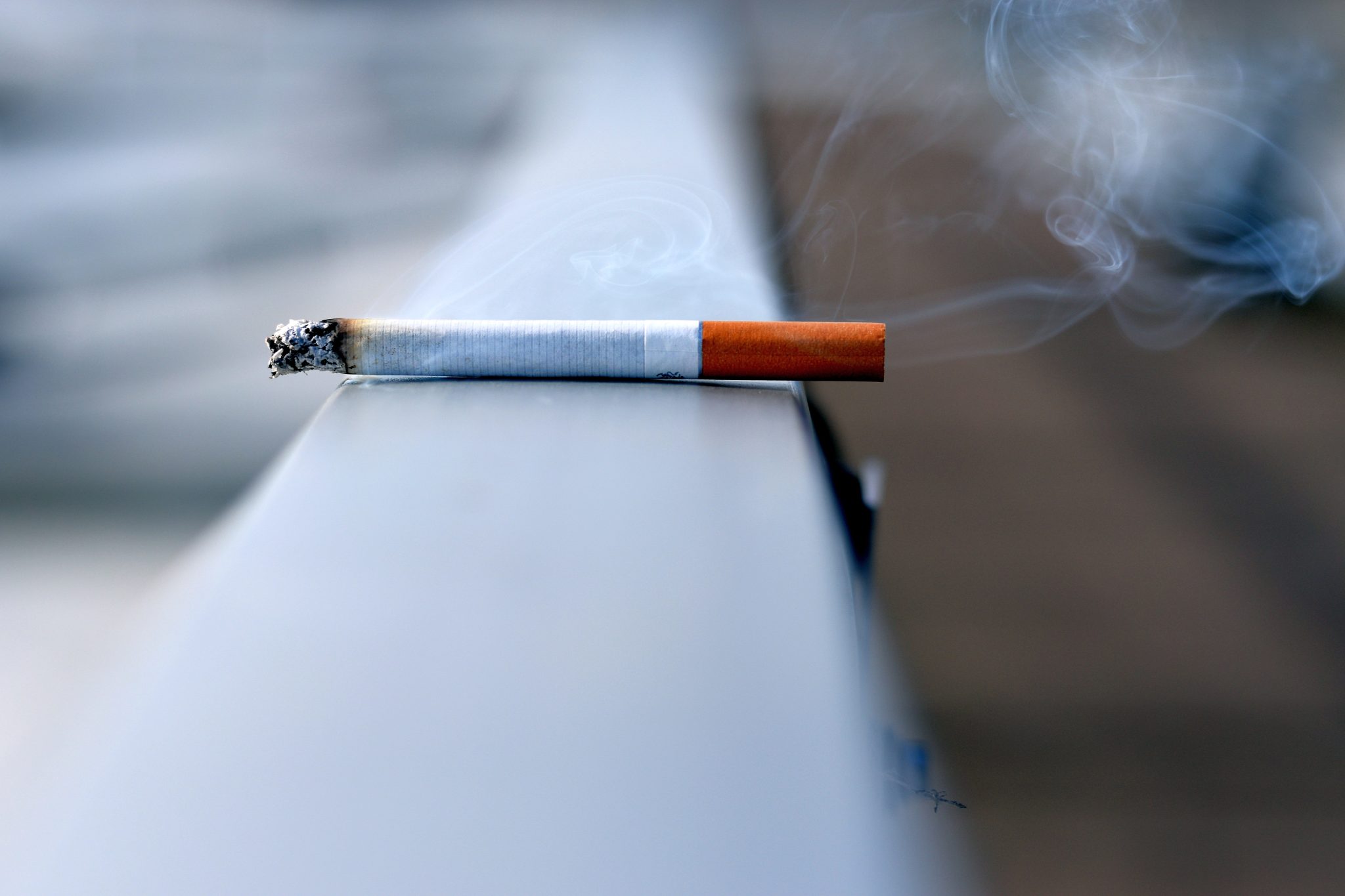ELI5: This article looks at the mystery behind the hard, red cherry at the end of cigarettes. The cherry is actually a small piece of plastic that acts as a filter to reduce the amount of tar and other harmful chemicals. The plastic is heated up to a very high temperature, which creates the solid form that is recognizable at the end of a cigarette. By using this plastic filter, smokers can reduce their exposure to harmful substances in their smoke. This article explains the science behind the solid cigarette cherry, and how it can help smokers reduce their intake of potentially dangerous chemicals.
TLDR / Key Takeaways
- Cigarettes contain a variety of additives, including glycerol and propylene glycol, which can lead to a more solid cherry at the end of the cigarette.
- The more solid cherry is also caused by the differences in the way cigarettes are made. Cigarettes are composed of three parts: the filter, the tobacco, and the paper. The filter and paper can trap some of the smoke and the tobacco can reduce the burning rate, resulting in a more solid cherry.
- The cherry of a cigarette can also be affected by the type of tobacco used. Different types of tobacco can produce different flavors, which can lead to a more solid cherry.
- Finally, the temperature of the cigarette can also affect the cherry. If the cigarette is smoked slowly, it can produce a more solid cherry as the smoke has more time to cool down.
- In conclusion, the cherry of a cigarette can seem more solid due to a variety of factors such as additives, the type of tobacco used, and the temperature of the cigarette. Understanding these factors can help smokers better enjoy their cigarettes.
A Quick Introduction to Cigarette Cherry’s
Welcome to our blog post on why the “cherry” of a cigarette seems to be more solid than the non-smoldering material. The “cherry” of a cigarette is the part that is still smoldering when the cigarette is no longer being smoked.
It is the last bit of burning material and it is typically the most solid part of the cigarette. In this post, we’ll take a look at the scientific reasons why the cherry is more solid than the non-smoldering material.
We’ll also discuss the effects of smoking cigarettes on the cherry and how it affects the overall composition of the cigarette. Finally, we’ll look at the implications of a smoking cherry on smoking safety and health. By the end of this post, you should have a better understanding of why the cherry of a cigarette is more solid than the non-smoldering material.
Why the Cherry of a Cigarette Seems to Be More Solid
The cherry of a cigarette is the end that glows red when it is lit. It is believed to be the most important part of a cigarette, as it is what keeps the tobacco burning while being smoked.
While the cherry of a cigarette may seem solid, there is actually a scientific reason as to why it is so. This overview will discuss the reasons why the cherry of a cigarette appears to be more solid than other parts of the cigarette.
The main reason why the cherry of a cigarette seems to be more solid is because of the presence of an oxidizing agent known as nitric oxide. This compound is released from the burning tobacco and reacts with the oxygen in the air to form nitrogen dioxide.
This reaction creates a layer of solidified ash on the cherry, which gives it its solid appearance. Additionally, the cherry is also surrounded by a layer of tar, which helps to retain heat and further solidifies the cherry.
The cherry of a cigarette also appears to be more solid because of its shape. The shape of the cherry is designed to ensure optimal airflow and ensure that the cherry remains lit. This, combined with the layer of ash, tar, and oxygen, helps to keep the cherry burning and gives it its solid appearance.
Finally, the cherry of a cigarette is made of a special type of paper. This paper is designed to be highly combustible, which helps to ensure that the cherry remains lit and appears to be more solid.
In conclusion, the cherry of a cigarette appears to be more solid due to the presence of an oxidizing agent, its shape, and the type of paper it is made from. These factors combine to ensure that the cherry remains lit and gives it its solid appearance.
Some Definitions You Will Need to Know to Understand the Science Behind This Concept
- Tobacco – a plant grown in warm climates, widely used in cigarettes and other products for smoking.
- Cigarette – a thin cylinder of finely cut tobacco rolled in paper for smoking.
- Curing – the process of preserving tobacco leaves by drying, smoking or fermenting.
- Filter – a device used to reduce the amount of tar and nicotine inhaled when smoking a cigaette.
- Tar – a dark, thick, carcinogenic substance produced by the burning of tobacco.
- Nicotine – a colorless, non-toxic, addictive alkaloid found in tobacco and other plants.
- Tobacco Blend – the combination of different types of tobacco leaves used to create a cigarette.
- Flue-Curing – a process of curing tobacco leaves in which the leaves are exposed to hot air.
- Air-Curing – a process of curing tobacco leaves in which the leaves are dried in a ventilated barn.
- Fire-Curing – a process of curing tobacco leaves in which the leaves are smoked over a fire.
Tobacco is a plant grown in warm climates that is widely used for smoking products, such as cigarettes. Cigarettes are thin cylinders of finely cut tobacco rolled in paper for smoking.
To preserve the tobacco leaves, they must be cured, which can be done through drying, smoking, or fermenting. To reduce the amount of tar and nicotine inhaled when smoking cigarettes, many people use filters.
Tar is a dark, thick, carcinogenic substance produced by the burning of tobacco, and nicotine is a colorless, non-toxic, and addictive alkaloid found in tobacco and other plants. To create cigarettes, different types of tobacco leaves are combined together to form a tobacco blend. There are three main processes of curing tobacco leaves, which include flue-curing, air-curing, and fire-curing.
What Is the Chemical Makeup of a Cigarette?
Cigarettes are composed of a variety of toxic chemicals, some of which are known to cause cancer. Many of these chemicals are not found in nature, but are created through the process of manufacturing cigarettes. In this blog post, we will explore the chemical makeup of a cigarette and discuss the health risks associated with each chemical.
The paper of a cigarette is made up of cellulose acetate fibers and other additives, including adhesives and dyes. The tobacco used in cigarettes is a blend of different species, including Virginia tobacco, burley, and oriental. This blend is then treated with ammonia and other chemicals to increase the nicotine content.
The smoke from a cigarette contains over 4,000 chemical compounds, many of which are toxic. This includes over 40 known carcinogens, such as benzene, arsenic, and formaldehyde.
Other chemicals include hydrogen cyanide, carbon monoxide, and ammonia. All of these chemicals are known to be hazardous to our health, especially when inhaled.
The smoke from a cigarette also contains nicotine, a highly addictive substance. Nicotine is a stimulant that increases heart rate and blood pressure. It also causes the brain to become more alert and can lead to dependence. Long-term exposure to nicotine has been linked to increased risk of heart disease, stroke, and various types of cancer.
Finally, the smoke from a cigarette contains over 600 flavorings, such as menthol, cherry, and chocolate. While these flavorings may make cigarettes more appealing to some people, they are also known to cause harmful health consequences. Many of these flavorings contain chemicals that have been linked to respiratory problems and cancer.
To sum up, the chemical makeup of a cigarette is composed of thousands of toxins, many of which are known to be hazardous to our health. These toxins include over 40 known carcinogens, nicotine, and various flavorings.
Long-term exposure to these chemicals can lead to a number of serious health problems, such as heart disease, stroke, and different types of cancer. It is important to be aware of these risks and take steps to reduce your exposure to cigarette smoke.
How Does the Smoldering Process in Cigarettes Work?
Smouldering is the process through which cigarettes are burned and can be seen as a form of combustion.
This process begins when the cigarette is lit and the user inhales, providing oxygen to the flame. This oxygen then accelerates the chemical reaction of the cigarette’s components, creating smoke which is then exhaled.
The components of the cigarette are typically composed of paper, tobacco, and other additives like sugar, flavorings, and preservatives.
When the cigarette is lit, the paper acts as a fuel, burning at temperatures of up to 800°C. This heat then causes the tobacco to smoulder, releasing a range of chemicals such as nicotine, tar, and carbon monoxide.
The chemical reaction of smouldering is accelerated by the user’s inhalation, as the oxygen from the air accelerates the burning of the paper and the smouldering of the tobacco.
This process generates the smoke which contains the chemicals that the user then inhales, exposing them to the various health risks associated with smoking.
Smouldering has been found to be one of the most efficient methods of delivering a cigarette’s compounds to the user, as the amount of smoke inhaled is directly related to the size of the inhalation. This means that the more oxygen that is taken in, the more smoke that is produced.
Overall, smouldering is an important part of the process of smoking cigarettes, and is responsible for providing the user with the nicotine, tar, and other compounds that are present in the smoke. Inhaling this smoke can be damaging to the user’s health, and so it is important to be aware of the risks associated with smoking.
How Does Heat Transfer in Smouldering Work?
When it comes to heat transfer, smouldering is one of the most efficient and effective ways to move thermal energy from one place to another. Let’s take a closer look at the science behind this process and how it works.
Heat transfer in smouldering is the process of transferring thermal energy from a hot object to a colder object. This is achieved by the hot object releasing its heat, which is then transferred to the colder object.
Smouldering is beneficial as it is a much slower process than other forms of heat transfer, such as conduction or convection. This makes it a more efficient and effective way to move thermal energy.
When it comes to heat transfer in smouldering, the process is initiated by a heat source, such as a fire. The flames from the fire create hot air, which rises and moves away from the source.
This hot air then comes into contact with cooler objects, such as the walls of a home, and the heat is transferred from the hot air to the cooler objects.
The efficiency of heat transfer in smouldering depends on the materials that are being used. For example, smouldering is much more efficient when it comes to heat transfer through metal than it is through wood. This is because metal is a better conductor of heat than wood, meaning it is able to transfer heat more efficiently.
Smouldering is also more efficient than other forms of heat transfer when it comes to large surfaces. This is because, while conduction and convection require a direct contact between the hot and cold objects, smouldering does not.
Instead, the hot air is able to flow around the object and transfer its heat to the cooler object in the process.
Finally, smouldering is a relatively safe way to transfer heat. This is because it does not involve the use of any open flames or other sources of potential danger.
This makes it an ideal method of heat transfer for many residential and commercial applications.
In summary, heat transfer in smouldering is an efficient and effective way to transfer thermal energy from one place to another.
It is initiated by a heat source, and the efficiency of the process depends on the materials that are being used. Additionally, smouldering is a relatively safe way to transfer heat, making it an ideal method for many residential and commercial applications.
What Are Some Other Common Other Smouldering Materials?
This is relevant to review because all of these products involve burning or heating of some type of dried, fermented tobacco. Cigarettes, cigarillos, hookahs, and even e-cigarettes use processed tobacco and heat to produce a smoke that can be inhaled.
Vaporizers also heat up a liquid or solid material, such as nicotine, to create a vapor that can be inhaled. Bidis are hand-rolled cigarettes made from tobacco and other natural ingredients.
All of these products produce a cherry-colored ember or ash at the end of the smoking process, and this ash is the result of the burning of the tobacco. This is why the cherry of a cigarette seems to be more solid than the smoke itself.
- Cigars – A cigar is a tightly rolled bundle of dried and fermented tobacco that is ignited so that its smoke may be drawn into the mouth.
- Pipe Tobacco – Pipe tobacco is a type of processed tobacco that is smoked in a pipe. It is usually a blend of different varieties of tobaccos, such as Virginia, burley, and oriental.
- Hookah – A hookah is a traditional smoking device consisting of a bowl, a hose, and a mouthpiece, which is used to smoke flavored tobacco.
- E-Cigarettes – E-cigarettes are electronic devices that simulate the look and feel of smoking, but instead of burning tobacco, they vaporize a liquid solution containing nicotine.
- Cigarillos – Cigarillos are small cigars with a short filler and a wrapper made from tobacco. They are typically smoked as a single cigarette, and are sometimes flavored.
- Vaporizers – Vaporizers are devices that heat up a liquid or solid material, such as nicotine, to produce a vapor that can be inhaled.
- Bidis – Bidis are small, hand-rolled cigarettes made from a combination of tobacco, spices, and other natural ingredients. They are popular in India and other parts of Asia.
Final Thoughts on Why the Cherry of a Cigarette Seems to Be More Solid
In conclusion, the reason why the cherry of a cigarette seems to be more solid than the rest of the cigarette is due to the fact that the cherry is composed of a higher concentration of tobacco than the rest of the cigarette.
This higher concentration of tobacco gives the cherry of the cigarette a more solid-like consistency, allowing it to remain intact even after the cigarette has been smoked.
This phenomenon is further supported by the various studies that have been conducted on the matter, which have shown that the cherry of a cigarette contains a greater amount of nicotine and other tobacco compounds than the rest of the cigarette.
Additionally, the evidence provided by surveys conducted among smokers has revealed that they are more likely to notice the consistency of the cherry than other parts of the cigarette, further confirming the fact that the cherry of a cigarette is more solid than the rest of the cigarette.
Ultimately, it can be seen that the cherry of a cigarette is more solid than the rest of the cigarette due to the fact that it contains a higher concentration of tobacco.
This phenomenon can be seen in various studies and surveys, which have all revealed that the cherry of a cigarette contains more nicotine and other tobacco compounds than the rest of the cigarette. Therefore, the next time you smoke a cigarette, take the time to appreciate the cherry and its unique properties.
Citations:
- American Chemical Society. “Molecule of the Week: Nicotine.” ACS, www.acs.org/molecule-of-the-week/archive/n/nicotine.html
- Centers for Disease Control and Prevention. “Overview of the Special Sample.” CDC: Exposure Report, https://www.cdc.gov/exposurereport/overview_special_sample.html
- World Health Organization. “Tobacco.” WHO, World Health Organization, www.who.int/news-room/fact-sheets/detail/tobacco
- RIVM. “Koolmonoxide (CO).” RIVM, https://www.rivm.nl/en/tobacco/harmful-substances-in-tobacco-smoke/koolmonoxide-co



